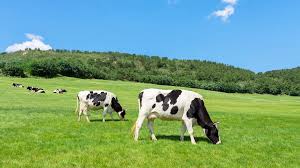The term “bird flu” refers to Highly Pathogenic Avian Influenza (HPAI), which has been making headlines lately because of its extraordinary global spread among poultry populations. The discovery of the H5N1 form of the virus in dairy cattle across multiple US states, however, has raised more concerns.
Although birds are the primary victims of HPAI, this outbreak represents a concerning example of interspecies transmission. The good news is that there has only been one documented human case to date, which was connected to close contact with infected cows. According to the Centers for Disease Control and Prevention (CDC), there is still little risk to the general public.
Regarding this trend, milk safety is the main area of worry. The Animal and Plant Health Inspection Service (APHIS) of the Department of Agriculture is closely collaborating with the U.S. Food and Drug Administration (FDA) to look into the possibility of the virus being present in raw milk.
The FDA claims that the HPAI virus is probably rendered inactive by pasteurization, which is the typical procedure used on milk that is sold commercially. Even after processing, some research indicates that virus particles may remain. At this time, milk samples from impacted animals, from the processing chain, and from shop shelves are being examined by the FDA.
The current findings show the gaps in our understanding regarding HPAI in dairy cattle, even if no evidence has surfaced to imply that the commercial milk supply is dangerous.
Answers to the following questions are desperately needed by researchers:
- How vulnerable are dairy cows to infection with HPAI?
- Is it possible for cows to contract the virus from one another by chance?
- What are the dairy industry’s long-term consequences?
The virus may have started the outbreak earlier than previously believed, according to a recent genomic investigation, which raises questions about the possible scope of the issue. This emphasizes how urgently, and thoroughly public health authorities must respond.
The FDA highlights that it is committed to openness and that it will make more information available as soon as results from ongoing research are in. Meanwhile, they assert that the commercial milk supply is still safe for consumption based on current information.
The following are some more things to think about:
- Public health response: To contain the outbreak in chicken farms, the USDA and state authorities are putting forth effort. This covers vaccination campaigns, the removal of diseased birds from the environment, and biosecurity protocols as necessary.
- Economic impact:A substantial financial loss has already been incurred by the poultry industry as a result of the ongoing avian influenza outbreak. It is too early to tell how this might affect the dairy sector.
- Global ramifications: There is worry that HPAI may spread more afield as a result of its appearance in dairy cattle. International cooperation and information exchange are essential for handling this changing circumstance.
Public health organizations are actively looking into the situation and taking action to reduce the hazards, despite the fact that it may seem scary at the moment. It is recommended that consumers who handle raw milk products adhere to normal hygiene practices, such as thorough hand washing, and monitor updates from reliable sources such as the FDA and CDC.





